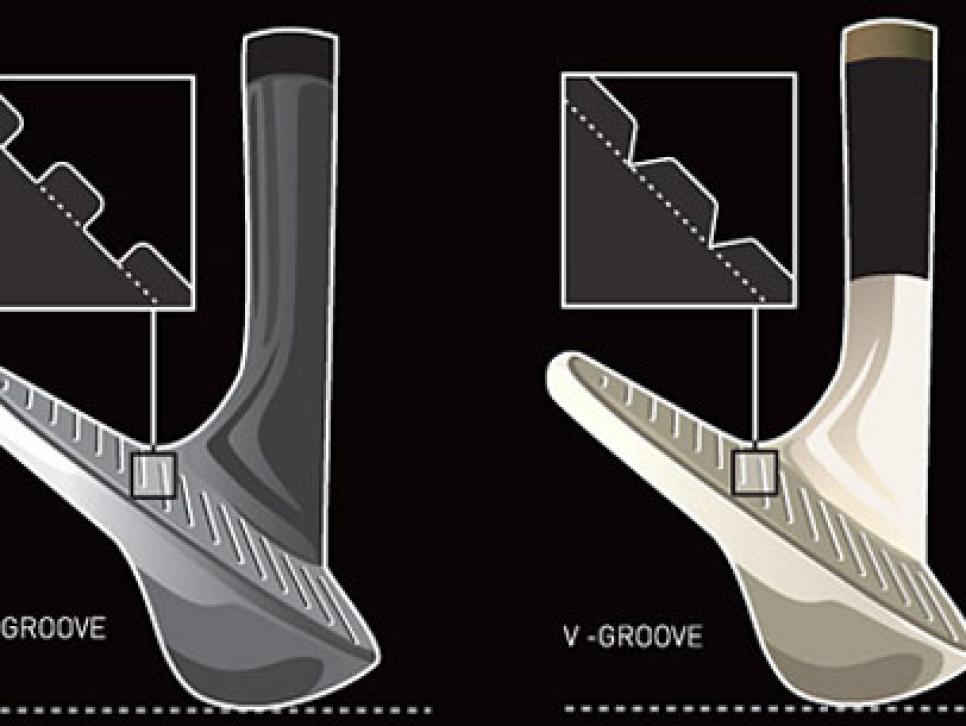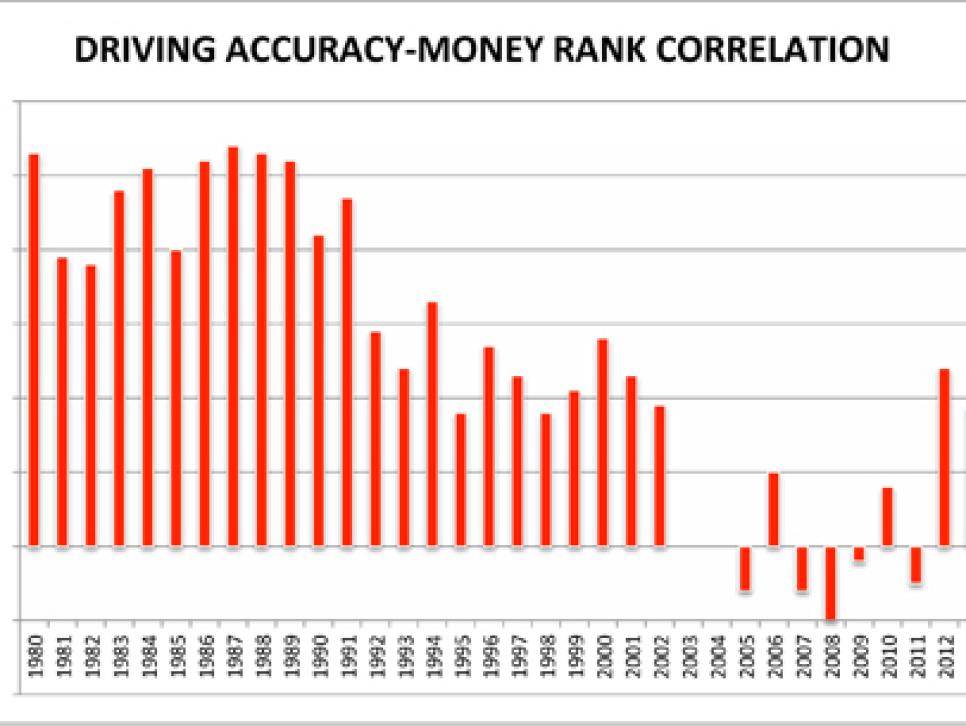The Loop
Margin of error: Groove rule's mixed stats

The case continues to be made that the USGA's decision to reduce the effectiveness of grooves in generating spin has not had the intended effect. In short, detractors say, the groove rule hasn't noticeably restored the value of driving accuracy by increasing the penalty for hitting the ball in the rough, and players and equipment have all risen to make the new rule more or less meaningless.
Or has it? With four full years of data to view, the evidence is mixed, at best. While FoxSports.com's senior golf writer Robert Lusetich recently tweeted "not one guy who led driving accuracy at any tournament won #BombandGouge," it is also true that there has been no meaningful change in the average percentage of fairways hit since the groove rule was first put in place on the PGA Tour in 2010. (In fact, driving accuracy this year is 61.1 percent vs. 62.9 in 2009, the last year of aggressive grooves.) Scrambling, or the frequency players to make par after missing the green with an approach shot, also is basically unchanged since 2009 (was 57.5 percent, is now 56.9). Same with the statistic called rough proximity, which is the average distance approach shots from the rough finished from the hole (was 43 feet, is now 43 feet-2 inches). In fact, nearly every sub-category of approaches from the rough is about the same or even better today than it was in 2009.
However, there are some statistics that show the groove rule has had an effect. For example, the average rank in driving accuracy for the top 10 on the money list in 2009 was 88; this year it was 58. That's the lowest average rank for the top 10 since 1994, the year before the first oversized titanium drivers were played on the PGA Tour. If you compare the average rank in driving accuracy for the top 30 in 2009 vs. the top 30 this year, the difference is just as distinct. The average rank in 2009 was 93; this year it was 65.
Shotlink research also reveals a peculiar development for approach shots hit from the rough. It seems the tendency to hit shots well past the hole, like you would see from the so-called flyer lie, has dramatically increased in the years following the implementation of the groove rule. A recent study shows that the number of shots that end up 10 yards or more past the hole has increased 37 percent compared to pre-groove rule years. The number of shots PGA Tour players hit from the rough that end up past the hole by 10 or more yards is, of course, a fairly small number, but the change in that trend could be viewed as more than coincidental.
In addition, there is one other statistic that bears studying. In making its initial case that driving accuracy's importance in the game had been diminished (and grooves should be studied), the USGA pointed prominently to the heavy-grade statistics idea of "rank correlation coefficient." Basically, it's a way of describing the strength of the relationship of two sets of numbers, how much one might be related to the other. If two groups of rankings are in exactly the same order (say, every players' position on the money list exactly matches his position on the driving accuracy list), the relationship has a correlation coefficient of +1. If the two ranks are completely the opposite (the player who is first on the money list is last on the driving accuracy list), the correlation coefficient is -1. A score of zero means the rankings are unrelated.
As I've written about this before, you may remember that driving accuracy and money rank used to have a fairly positive correlation coefficient (between .4 and .6 from 1980-92). But in the years of aggressive grooves (particularly wedges) from 2003 on, that correlation dipped toward zero and occasionally into negative territory.
The number last year was above .2, and now this year, the correlation coefficient is .19, numbers that basically match the average from 1995-2002. The last two years' correlation coefficients are a dramatic jump up from what amounts to nearly a decade of relative irrelevance between driving accuracy and a player's position on the money list.

Now, in light of all the evidence, the groove rule's effect doesn't seem overt, complete or unquestioned. Far from it, in fact. (Still, it hast to be at least a little telling about the perceived effect of the rule that the standard among tour players these days is to put in fresh-groove wedges every month.) And it sparks at least a little curiosity that there have been dramatic changes in these other three statistical areas. In the end, it seems the penalty for playing from the rough with today's less efficient grooves may not be discernibly worse across all sorts of metrics, save one: Winning money. And, one could argue, that might be the only one that matters.